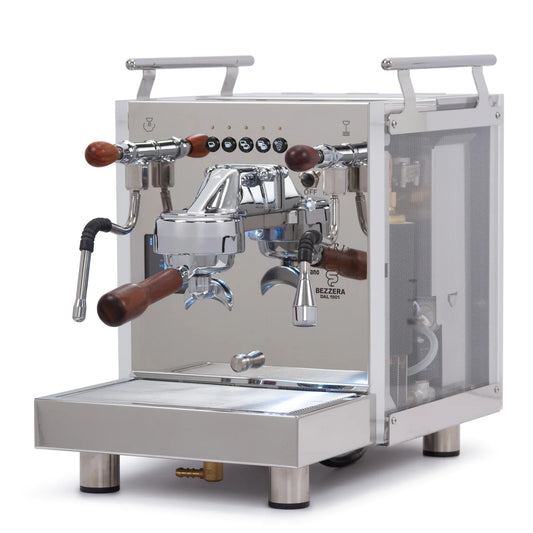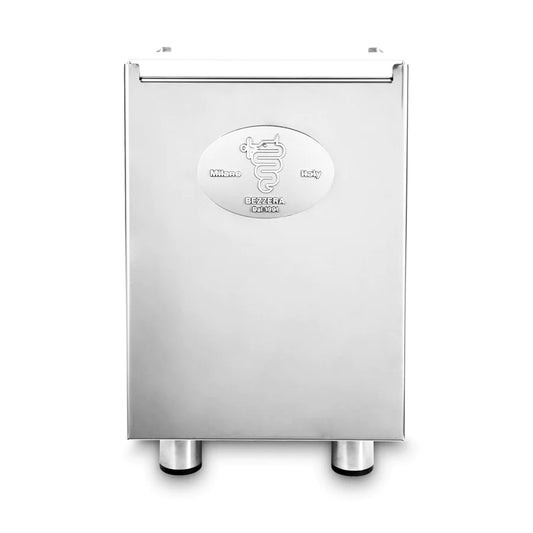Matcha’s Ascent: From Ancient Tradition to Modern Trend in Australia
Table of Contents
- Key Highlights:
- Introduction
- The Rise of Matcha Culture in Australia
- The Artisanal Approach: Quality and Tradition
- Matcha Production: A Study in Global Dynamics
- Health Implications of Matcha: The Science
- The Future of Matcha in Australia
- FAQ
Key Highlights:
- Matcha has surged in popularity across Australia, overtaking coffee as a trending beverage in cafes and social media, particularly among younger demographics.
- Places like Matcha Kobo in Melbourne exemplify the dedication to authentic preparation and sourcing of high-quality matcha, reflecting a broader cultural shift towards appreciation of traditional practices and wellness.
- Despite increasing global demand, challenges such as aging tea trees and production limitations in Japan are reshaping the future of matcha, prompting exploration of local alternatives in countries like Australia.
Introduction
In bustling cafes across Australia, matcha has cemented its status as more than a mere beverage; it has become a lifestyle choice and a social connector, especially among younger consumers. Once a simple component of traditional Japanese tea ceremonies, matcha has evolved into a multifaceted cultural phenomenon — showcased in the creations of artisan cafes, celebrated in local communities, and touted for its health benefits. As Australians embrace this vibrant green elixir, the implications resonate far beyond taste and trend, intertwining with the nuances of identity, production, and wellness in a global context.
The Rise of Matcha Culture in Australia
On a typical afternoon at Matcha Kobo in Melbourne, a line of patrons snakes out the door, a testament to the drink's undeniable allure. The cafe's atmosphere buzzes with excitement as aproned employees expertly whisk matcha and craft intricate desserts, all while patrons film the experience for their social media feeds. This ritualistic endorsement of consumption highlights matcha’s status as a cultural currency, especially among Generation Z and millennials who increasingly rely on visual storytelling to affirm their lifestyle choices.
Matcha’s rise in Australia mirrors broader global trends favoring health-conscious alternatives to caffeine-heavy beverages. Unlike the jittery energy associated with coffee, the calm focus derived from matcha — attributed to its unique blend of caffeine and the amino acid L-theanine — has drawn a devoted following eager to trade quick fixes for sustained wellness.
Matcha as a Social Phenomenon
The social aspect of drinking matcha has fostered communities, such as Sydney’s Matcha Club, initiated by sisters Ellene and Donna Win. Their events — often themed around creativity and connection — demonstrate how matcha has transcended its role as merely a drink to become a communal activity that encourages socialization and friendship. The club has amassed significant followership, reflecting a collective desire for connection rooted in experiences shared over matcha.
In a similar vein, the Melbourne-based "Melb Matcha Girlies," established by Tara Daw, embodies how contemporary social dynamics intertwine with food preferences. As she notes, matcha symbolizes a shift towards "slow-living culture," contrasting sharply with fast-paced coffee consumption. This movement has been spurred not just by the beverage itself but by the cultural narratives wrapped around it—essentially linking matcha to values of mindfulness and community resilience in the wake of global uncertainties.
The Artisanal Approach: Quality and Tradition
At the heart of Matcha Kobo’s operations is a commitment to quality that stands apart from mainstream practices. Owner Stella Dong emphasizes the importance of sourcing high-grade matcha from Uji, Japan, and grinding the tea leaves on-site with granite mills, ensuring freshness and a superior taste profile. This meticulous process reflects a broader trend among cafes towards authenticity and craftsmanship, inviting customers to not just enjoy but also appreciate the beverage’s rich tradition.
Every detail matters in the preparation of matcha, from the temperature of the water used to whisk the powder to the precise measurement of matcha itself. This artisanal approach has found favor among consumers who are increasingly discerning about their food and beverage choices—much like the farm-to-table movement in dining. It demands not just consumption but respect for the ingredients and the cultures from which they originate.
The Impact of Social Media
The vibrant aesthetic of matcha preparations has led to an explosion of social media content, particularly among younger audiences. Platforms like Instagram and TikTok have become avenues for "matcha girlies" to showcase their daily rituals, contributing to an aspirational lifestyle that places a premium on aesthetics and wellbeing. The proliferation of colorful matcha drinks appeals to visual-centric consumption, encouraging cafes to innovate continuously in flavor and presentation.
However, the spotlight on matcha also highlights how food trends can shift rapidly based on cultural currents and influencer activities. Cafes that once solely focused on coffee are increasingly adapting their menus to include matcha, responding to consumer desires while also embracing the economic benefits of appealing to this growing demographic.
Matcha Production: A Study in Global Dynamics
The journey from tea garden to Australian cafes is fraught with complexities. Matcha production in Japan is facing significant challenges that threaten its supply chain. Japan's Ministry of Agriculture has reported a marked decrease in overall tea production, driven by aging tea trees and a diminishing workforce willing to engage in the traditional methods necessary for quality matcha cultivation.
As production volumes dwindle, local producers like Ai Hasegawa of Norm Tea House in Tokyo express concern over evolving procurement patterns, where lower-quality matchas are increasingly sought due to supply shortages. This shift underscores the volatility experienced by high-quality producers who struggle to maintain the standards synonymous with ceremonial matcha while meeting growing global demand.
The Growing Demand for Organic Matcha
The organic matcha market is experiencing a particular boom, with organic farmers reporting fivefold increases in demand. As consumers become more health-conscious and environmentally aware, they seek matcha that aligns with their values, prompting producers to adapt their practices. Although the increased demand for organic matcha offers opportunities for farmers, it also introduces challenges linked to sustainability and production scaling.
Conversely, producers are navigating a landscape where the economic pressures of increased procurement costs and competition from substitutes come into play. For example, Southern Forest Green Tea, an Australian venture, attempts to enter the market with locally grown matcha. Yet, they acknowledge that their climate constraints limit their ability to produce matcha of the same quality associated with Japanese varieties. The resultant product, while attractive in terms of pricing, lacks the vibrant color and flavor profile that characterizes premium matcha.
Health Implications of Matcha: The Science
Matcha enthusiasts often extoll its health benefits, branding it as a superfood packed with antioxidants. Research suggests that the bioactive compounds found in matcha can aid in reducing the risk of chronic diseases and support heart health. Notably, matcha contains higher concentrations of catechins than ordinary green tea due to its powdered form, which allows for greater extraction of beneficial compounds during consumption.
However, nutritionists caution against the misconception that all matcha-infused products carry the same health benefits. As highlighted by food scientist Emma Beckett, beverages like matcha lattes or matcha-infused desserts may not offer the same nutritional advantages as traditional consumption methods—typically involving pure matcha and water. The importance of moderation and mindfulness in consumption cannot be overstated.
Navigating Diet and Lifestyle Changes
In recent years, dietary trends have shifted towards less reliance on caffeine-intensive solutions to coping with stress and fatigue, often catalyzed by the recent global pandemic. Individuals like Tara Daw emphasize that the cultural significance of matcha reflects a communal pursuit of balance and self-care. The drink's calming effects pose a stark alternative to the adrenaline-soaked hustle culture associated with traditional coffee consumption.
Nevertheless, caution persistently accompanies any heightened consumption of matcha. High iron content in certain varieties and their interaction with iron supplements have raised concerns in relation to nutrient absorption. Highlighting the need for consumers to remain educated about the complexities of dietary choices is essential in navigating the health narrative around matcha as trends ebb and flow.
The Future of Matcha in Australia
As matcha's popularity continues to flourish, it stands to reason that the beverage may face saturation in pursuit of the next trendy ingredient. Influencers and consumers alike are adept at pivoting towards the next health craze—however, the continued integration of matcha within the drinking culture points towards a potentially sustainable niche. Coffee shops are beginning to recognize that offering high-quality matcha not only meets consumer demand but also aligns with the evolving conversation around wellness and lifestyle choices.
Abigail Forsyth of KeepCup notes the increasing interest in reusable cups designed for iced beverages, signifying a broader trend towards environmentally conscious consumption practices. This trend, alongside the undeniable visual attraction of matcha beverages, suggests that matcha is not merely a fleeting trend but rather a cornerstone of the evolving beverage landscape in Australia.
The Divergence of Tradition
Within Melbourne’s thriving beverage scene, there remains a divergence between traditional matcha enjoyment and contemporary adaptations. Cafes like Cibi choose to honor age-old tea practices, opting for a straightforward presentation that reflects the traditions behind the drink. Owner Meg Tanaka’s emphasis on the cultural significance of whisked matcha showcases the depth behind this vibrant culinary trend, inviting a deeper appreciation beyond its social media allure.
Yet, alongside traditionalists, there is a burgeoning market catering to modern tastes, with matcha lattes and desserts capturing the imagination of a new generation. As market observers note, evolving tastes will continue to shape the future of matcha, demanding a delicate balance between authenticity and innovation.
FAQ
Q: What is matcha?
A: Matcha is a powdered form of green tea made from shade-grown tea leaves. It is finely ground to create a vibrant green powder that is whisked with water or milk for consumption.
Q: How does matcha differ from regular green tea?
A: Unlike standard green tea leaves, matcha is consumed whole, providing higher concentrations of antioxidants and other bioactive compounds. It also offers a different flavor and energy profile compared to brewed green tea.
Q: Is matcha healthy?
A: Matcha is rich in antioxidants and compounds that may contribute to heart health, metabolic function, and chronic disease reduction. However, matcha products mixed with sugars or dairy may not retain the same health benefits.
Q: Can I grow matcha outside Japan?
A: While matcha production is primarily associated with Japan, some countries are experimenting with cultivation, including Australia. However, local conditions impact the quality and characteristics of the matcha produced.
Q: What are the latest trends in matcha consumption?
A: Increasingly, consumers enjoy matcha in various forms, including lattes, desserts, and social gatherings. Matcha’s cultural significance is being explored, leading to community initiatives that foster connection and collective well-being.
As matcha continues to weave its way through the culinary landscape, its dual identity as both a cherished tradition and a contemporary trend affirms its place in menus and social conversations alike—potentially securing its future as a staple in the lives of Australians seeking balance and connection.









